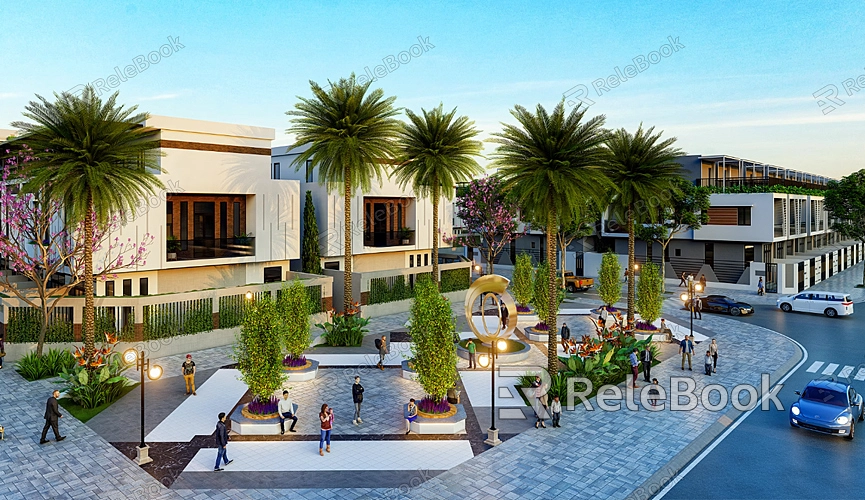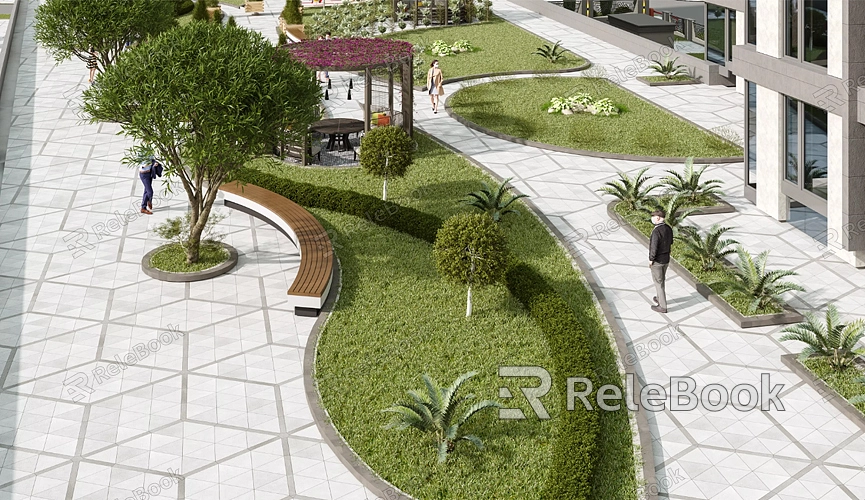How to Create a 3D Landscape Model?
3D landscape models play a crucial role in architecture, game development, and film production. Not only do they help designers and developers visualize their designs, but they also allow users to experience projects more intuitively. Creating a high-quality 3D landscape model involves several steps and requires the use of various tools. This article will guide you through the process of creating a 3D landscape model, offering key tips for crafting realistic landscape scenes.

Define Design Requirements
Before starting a 3D landscape model, it’s essential to define the design requirements clearly. It would help if you determined the model’s purpose, whether it’s for architectural planning, game environments, virtual exhibitions, or other uses. A clear goal will keep your work focused throughout the modeling process and help you avoid unnecessary revisions. Different projects demand varying levels of detail, so knowing the specific requirements will help you plan the workload and choose the right tools and techniques.
Gather Reference Materials
Reference materials are a key resource when creating a 3D landscape model. These can include real-world photos, maps, blueprints, or terrain data. With detailed references, you can more accurately capture the specific features and details of the landscape in your model. For example, terrain elevation, vegetation distribution, and building proportions can all be derived from reference materials. Field research, high-resolution images, or drone footage can provide invaluable data for creating a realistic model.

Choose Modeling Software
There are many 3D modeling software options available, and choosing the right one is crucial. Popular software includes Blender, SketchUp, 3ds Max, and Maya. Each has its strengths: Blender is great for beginners and is open-source; SketchUp is user-friendly and ideal for architectural design; while 3D Max and Maya are powerful tools that can handle complex scenes and detailed modeling. Choose software based on the complexity of your project and your familiarity with the program.
Create Basic Terrain
The first step in modeling is to create the terrain. You can either import real-world terrain data to generate the base landscape or manually draw the ground contours. If you're modeling a real-world landscape, using GIS data (Geographic Information System) can help you generate accurate terrain with height information. For fictional landscapes, you can manually adjust terrain tools to freely design mountains, rivers, lakes, and other features.
Add Landscape Elements
Once the base terrain is complete, the next step is adding landscape elements like buildings, vegetation, roads, and bodies of water. For natural landscapes, it’s important to pay attention to details like plants, rocks, and water features to make the scene more lively. You can use built-in object libraries from the software or download pre-made 3D models to import into your scene. For man-made structures, such as buildings and roads, ensure the proportions and placement are realistic and consistent with the overall design.
Apply Materials and Textures
Materials and textures are critical for making your 3D landscape model appear realistic. Adding the right textures to the ground, buildings, and plants enhances the details of your model. For example, use grass, sand, or rock textures for the terrain and apply metal, glass, or concrete textures for buildings. Ensure the texture resolution is high enough to avoid blurring or distortion when viewed up close.
Adjust Lighting and Render
Lighting has a significant impact on the overall look of a 3D landscape model. Set up sunlight, artificial lighting, or other light sources to simulate different times of day, such as daytime, dusk, or nighttime. Proper lighting and shadow settings can make your scene more three-dimensional and add realism to the landscape. Once the lighting is set, rendering the model is the final step. The rendering engine will produce high-quality images or animations, showcasing the final look of your model. Choose the right rendering settings to balance quality and rendering time.
Export and Present
After confirming that all model details and render settings are satisfactory, you can export your 3D landscape model in a common format such as OBJ, FBX, or STL. These formats can be used in other design software, game engines, or virtual display platforms. Depending on the presentation platform, you may need to convert the format and optimize file size and detail levels.
Creating a 3D landscape model is a step-by-step process that starts with defining your design requirements and ends with rendering and exporting the final model. By gathering reference materials, selecting the right software, and carefully applying textures and lighting, you can create a highly realistic and visually appealing landscape model. To further enhance the quality and efficiency of your models, visit Relebook to download a wide range of premium 3D models and textures.
FAQ
How do I choose the right software for creating a 3D landscape model?
When choosing modeling software, consider the complexity of your project and your personal preferences. If you’re a beginner or working on a simple project, Blender or SketchUp are good choices because they are easy to use yet powerful enough for most needs. For more complex projects requiring high levels of detail, 3ds Max and Maya offer advanced tools that are suited for professional-grade models.
How long does it take to create a 3D landscape model?
The time it takes to create a 3D landscape model depends on its complexity and the level of detail required. Simple models can take just a few hours to a few days, while larger, more detailed landscapes may take several weeks or longer. To work efficiently, it’s recommended to start with the overall layout and progressively add details and materials.
How can I make a 3D landscape model look more realistic?
A realistic 3D landscape model depends on high-quality textures, appropriate lighting, and fine detail work. Using high-resolution texture maps will enhance the realism, and adjusting shadows and lighting will give the scene depth. Also, adding thoughtful details, such as realistic vegetation, proper building proportions, and accurate physics simulations, will help make the model look more lifelike.
Can I use free resources to create a high-quality 3D landscape model?
Absolutely. Many websites offer free 3D models and texture resources, such as trees, rocks, and buildings. Software like Blender is also free and has a large community that provides extensive tutorials and support. You can download these free resources and integrate them into your project to create a high-quality 3D landscape model.

